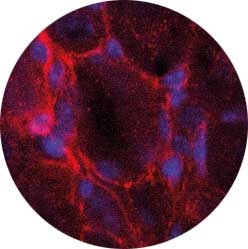Ipek YALCIN

 ⇨ Teams
⇨ Teams Presentation
 Our researches concern chronic pain, with a focus on neuropathic pain that arises as a consequence of a lesion or disease of the nervous system.
Our researches concern chronic pain, with a focus on neuropathic pain that arises as a consequence of a lesion or disease of the nervous system.
We are studying its treatments, in particular by antidepressant drugs, as well as its affective and anxio-depressive consequences.
We also have strong expertise in neuroanatomy, and are studying brain circuits underlying the various components of pain, of emotions and of the control of aminergic systems.
Michel BARROT, Mélanie KREMER
> Comorbidity between chronic pain and mood disorders
Ipek YALCIN
> Neuroanatomy of brain circuits
Pierre VEINANTE
> Peripheral biomarkers of psychiatric disorders
Pierre-Eric LUTZ

Pierre Veinante

Ipek Yalcin

Pierre Hener

(post-doctoral fellow)
I study the neural networks responsible for integrating contextual, emotional and stress-related information underpinning behavioural adaptations or maladaptations. Using mouse models and combining neuroanatomical approaches, calcium imaging, chemo- and optogenetic manipulations and behavioural studies, we aim to gain a better understanding of how the cortico-habenular network is involved in this integration and how its alteration may contribute to pathological disorders such as anxiety, depression or substance use disorders.

(Ph. D.)
My thesis project aims to improve our understanding of the mechanism by which antidepressants act on neuropathic pain. For several decades, some antidepressants have been the first-line treatments for pain caused by lesions or pathologies of the nervous system. The primary effect of these treatments is to recruit noradrenaline and serotonin by blocking their neuronal reuptake sites. The anatomical, molecular and functional basis downstream to this primary action, leading to pain relief, has yet to be detailed. My work focuses on the peripheral and cerebral components of this mechanism.

(PH. D.)
Opioids are drugs for which prolonged use can lead to addiction. We analyse, in mice and men, in the brain and blood, the epigenetic mechanisms (chemical processes that regulate gene expression) to better grasp their role in opioid addiction. Biomarkers thereby highlighted could allow to evaluate the severity and/or evolution of this disorder.

(doctorante)
Besides its somatosensory and emotional component, when pain becomes chronic, it is strongly associated with anxiety and depressive disorders. Epidemiological studies report a prevalence rate of 30% of major depressive disorders in patients suffering from neuropathic pain. Our team previously showed that the anterior cingulate cortex (ACC) and its circuitry are critical for the anxiodepressive consequences of neuropathic pain. My project aims to investigate the involvement of the ACC – raphe nuclei pathway in this comorbidity.

(Ph. D.)
Parvalbumin interneurons are essential for the brain’s excitation/inhibition balance, and are surrounded by a special type of extracellular matrix known as “perineuronal nets”. In particular, perineuronal nets provide neuronal support and limit neuronal plasticity. The aim of my thesis is to study the role of parvalbumin interneurons and their perineuronal nets in a mouse model of chronic pain developing anxiodepressive symptoms. By combining behavioral and immunohistofluorescence approaches, I aim to understand the link between the onset of anxiodepressive symptoms in chronic pain and possible changes in parvalbumin and perineuronal net neurons.

(PH. D.)
In the field of Neuroscience, the discovery of a new brain structure is a rare event that opens up many new perspectives. It is in this context that I am lucky enough to be leading a project on the tail of the Ventral Tegmental Area (tVTA), a structure that was brought to light, in particular by my team, around fifteen years ago. The tVTA, also known as the RostroMedian nucleus of the Tegmentum (RMTg), is a GABAergic structure directly posterior to the dopaminergic nuclei of the midbrain (ventral tegmental area and compact substantia nigra), for which it is a major inhibitory control center. Despite its anatomical and functional description in rats, the tVTA remains poorly described in mice and difficult to study. My thesis project therefore aims to identify new markers of the tVTA, define its anatomical limits and connectome in mice, and characterise its functional roles, particularly in aversion and locomotor activity.

Vandana Shree Srinivasan

Susana Lima

Yahia Hadj-Arab

Esther Colantonio

Yechao Han













